Research Teams in Group
Automation, robotics, and sensorics
Automatic control group
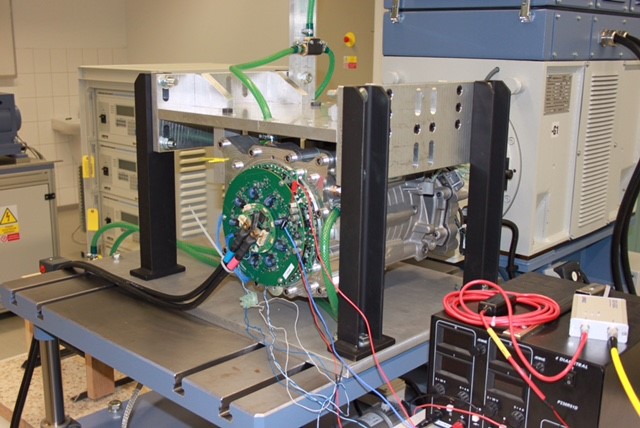
Leader: Prof. Pavel Václavek
The group specializes in modeling, identification, and control of complex dynamic systems, with a primary focus on researching advanced control algorithms and their application in industrial environments. This research not only involves the development of new algorithms but also their implementation in industrial hardware, such as embedded systems and programmable logic controllers (PLCs). In recent years, the group has particularly focused on control and diagnostic systems for drives, which are crucial for electromobility and industrial applications. The goal is to enhance the performance, reliability, and efficiency of these systems through innovative technologies and approaches.
Main research activities
- Development of control algorithms - model predictive control, adaptive control, robust control.
- Dynamical systems parameters identification.
- State observers and virtual sensors.
- Advanced control of electrical drives for electromobility and production systems.
- Diagnostics of electrical drives, faults prediction, detection and mitigation, including AI based approaches.
Main research results
- Model predictive control of PMSM drive, functional sample.
- Fault tolerant control of 9-phases PMSM drive for electromobility, functional sample.
- PMSMS Winding Interturn short-circuit detection using ANN, functional sample.
- AC Drives Observability Analysis, article published at IEEE Transactions on Industrial Electronics
Artificial intelligence, data processing and analysis
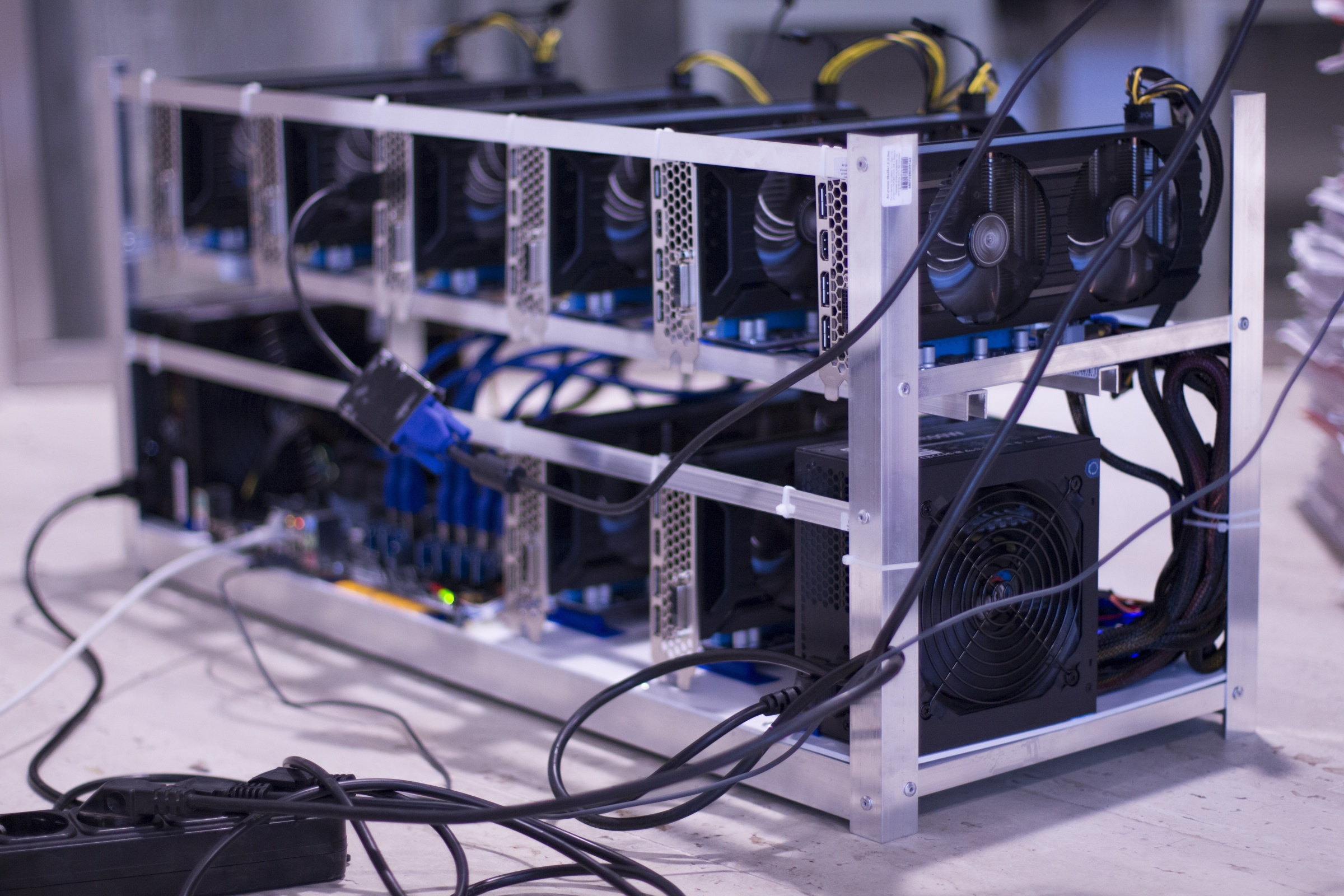
Group website: https://www.utko.fekt.vut.cz/en/artificial-intelligence-data-processing-and-analysis
We are researching advanced artificial intelligence methods for big data analysis and acceleration of computations on our high-performance supercomputers. Our technologies are able to offer solutions to a range of problems from advanced visual quality control of products, through security and guarding of premises, predictive maintenance of various types of equipment, including power grids, and prediction of future behavior, including automation of complex processes control.
Main research activities
- Machine learning (research of new algorithms for machine learning and artificial intelligence)
- Big data (parallel and distributed algorithms for processing of large volumes of data)
- Computer vision (image content analysis, object detection and classification, object tracing, segmentation)
- Biomedicine (applications for e-health and telemedicine)
- Biometrics and anonymization (identification and verification of persons based on face recognition, advanced anonymization of faces, extraction of secondary biometric and non-biometric features - age, gender, etc.)
- 3D audio
Main research results
- BREGER, A.; ORLANDO, J.; HARÁR, P.; DÖRFLER, M.; KLIMSCHA, S.; GRECHENIG, C.; GERENDAS, B.; SCHMIDT-ERFURTH, U.; EHLER, M. On Orthogonal Projections for Dimension Reduction and Applications in Augmented Target Loss Functions for Learning Problems. Journal of Mathematical Imaging and Vision, 2020, vol. 62, no. 3, p. 376-394. ISSN: 1573-7683. (https://link.springer.com/article/10.1007/s10851-019-00902-2)
- KHAN, J.; KAUSHIK, M.; CHAURASIA, A.; DUTTA, M.; BURGET, R. Cardi-Net: A Deep Neural Network for classification of Cardiac disease using Phonocardiogram Signal. COMPUTER METHODS AND PROGRAMS IN BIOMEDICINE, 2020, vol. 219, no. 1, p. 1-11. ISSN: 0169-2607. (https://dl.acm.org/doi/10.1016/j.cmpb.2022.106727)
- Baghela, N;Dutta, M. K.;Burget, R. Automatic diagnosis of multiple cardiac diseases from PCG signals using convolutional neural network. COMPUTER METHODS AND PROGRAMS IN BIOMEDICINE, 2020, vol. 197, no. 12, p. 1-11. ISSN: 0169-2607. (https://www.sciencedirect.com/science/article/pii/S0169260720315832)
- GÓRRIZ, J.M.; MEKYSKA, J.; et al. Computational approaches to Explainable Artificial Intelligence: Advances in theory, applications and trends. Information Fusion, 2023, vol. 100, no. December 2023, p. 1-37. ISSN: 1872-6305. (https://www.sciencedirect.com/science/article/pii/S1566253523002610)
- JONÁK, M.; MUCHA, J.; JEŽEK, Š.; KOVÁČ, D.; CZÍRIA, K. SPAGRI-AI: Smart precision agriculture dataset of aerial images at different heights for crop and weed detection using super-resolution. AGRICULTURAL SYSTEMS, 2024, vol. 216, no. April 2024, p. 1-11. ISSN: 0308-521X. (https://www.sciencedirect.com/science/article/pii/S0308521X2400026X)
- JEŽEK, Š.; BURGET, R.; JONÁK, M.; KOLAŘÍK, M.; HAVLÍČEK, L.; SKOTÁK, M.: Defect Detection System; Painted metal parts defectoscopy. (used in Konica Minolta systems - https://www.vut.cz/en/rad/results/detail/187567#vysledek-187567)
- MYŠKA, V.; BURGET, R.: ČEPS ARTIC; ČEPS ARTIC, ČEPS ARTIC, software for energy grid monitoring URL: https://cz.energyhub.eu/en.
BUT drone centre
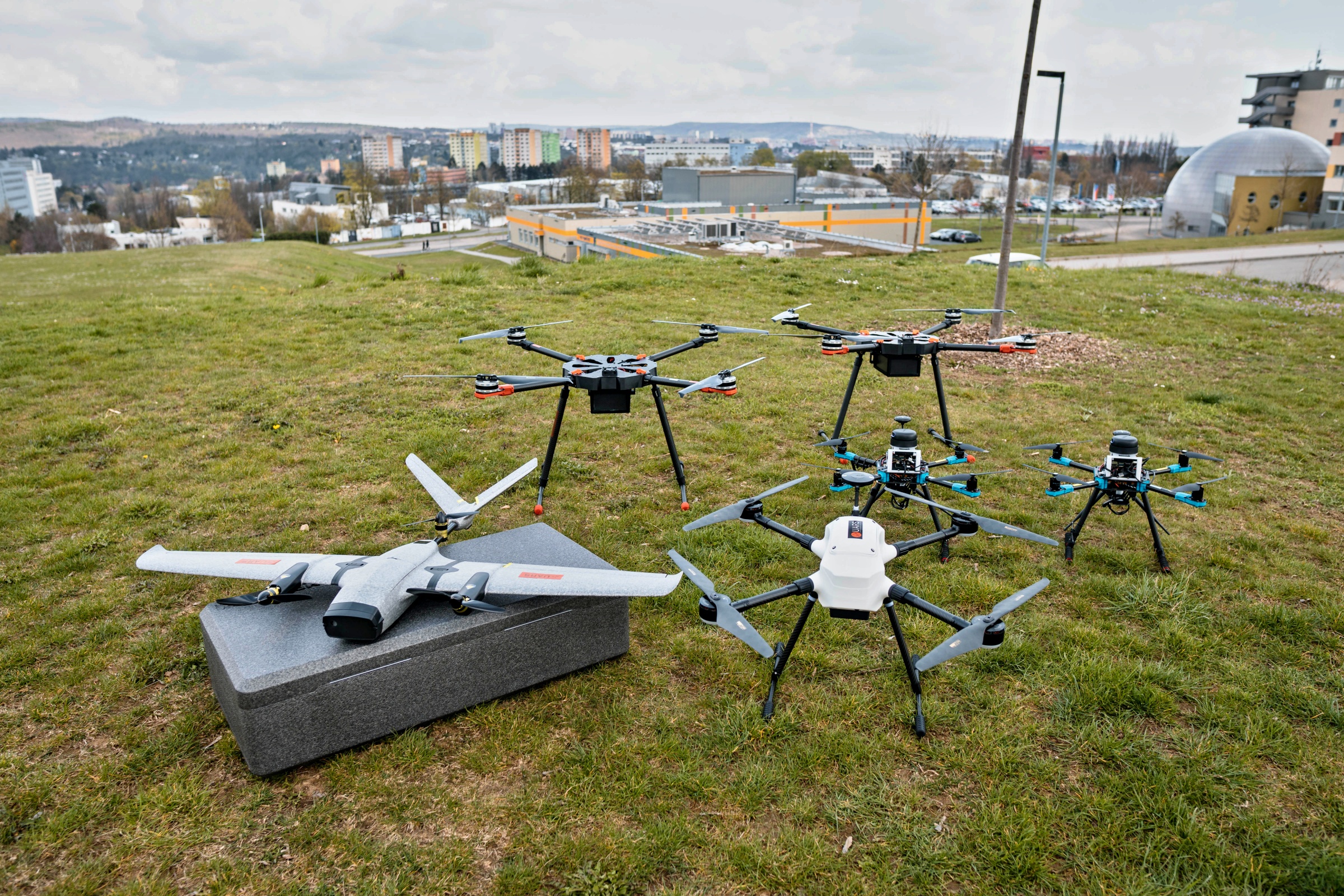
Leader: Ing. Jiří Janoušek, Ph.D.
Group website: https://www.utee.fekt.vut.cz/drone-centre
The main activity of the research group is the development of software and hardware for unmanned aircraft, especially for remote sensing and evaluation of imaged data. The group develops algorithms for UAV control in GNSS denied area. The group also focuses on the processing of multispectral or thermal imagery from which to create maps, plans and 3D models. We are also involved in the development of software for autonomous flight controllers based on image processing and the development of defenses against UAVs. We also develop artificial intelligence algorithms for swarm flying and controlling groups of unmanned vehicles.
Main research activities
- Swarm Flying
- Autonomous UAV Development
- Drone flight in non-GNSS environments
- UAV applications in precision agriculture and Industry 4.0
The most important publications
- MARCOŇ, Petr, Jiří JANOUŠEK, Josef POKORNÝ, et al. A System Using Artificial Intelligence to Detect and Scare Bird Flocks in the Protection of Ripening Fruit. Sensors [online]. 2021, 21(12) [cit. 2024-06-18]. ISSN 1424-8220. https://doi.org/10.3390/s21124244
- JANOUŠEK, Jiří, Václav JAMBOR, Petr MARCOŇ, Přemysl DOHNAL, Hana SYNKOVÁ a Pavel FIALA. Using UAV-Based Photogrammetry to Obtain Correlation between the Vegetation Indices and Chemical Analysis of Agricultural Crops. Remote Sensing [online]. 2021, 13(10) [cit. 2024-06-18]. ISSN 2072-4292. https://doi.org/10.3390/rs13101878
- MARCOŇ, P.; JANOUŠEK, J.; POKORNÝ, J.; NOVOTNÝ, J.; VLACHOVÁ HUTOVÁ, E.; ŠIRŮČKOVÁ, A.; ČÁP, M.; LÁZNIČKOVÁ, J.; KADLEC, R.; RAICHL, P.; DOHNAL, P.; STEINBAUER, M.; GESCHEIDTOVÁ, E. A System Using Artificial Intelligence to Detect and Scare Bird Flocks in the Protection of Ripening Fruit. SENSORS, 2021, vol. 21, no. 12, p. 1-16. ISSN: 1424-8220. https://doi.org/10.3390/s21124244
Most important projects
An Artificial Intelligence-Controlled Robotic System for Intelligence and Reconnaissance Operations
The project has been designed to investigate drone swarms flying in coordination with terrestrial robots. The research will focus on diverse relevant means, problems, and activities, such as AI algorithms to reconfigure a drone swarm; object detection and classification; sensor-based data analysis and evaluation; and modeling robotic systems to define the limit parameters, criteria, and objective functions that optimize the trajectories of the elements of a concrete system. The obtained knowledge and adopted methods, instruments, and technologies will enable us to create a demonstrator of an adaptable drone swarm collaborating with terrestrial robots. The outputs will be applicable in, for example, CBRN operations, personal detection, and perimeter search.
Autonomous drone with multi-sensor stabilized head with artificial intelligence
The project facilitates developing, testing, and evaluating an unmanned aerial vehicle that carries a multi-sensor head with an integrated processor to enable real-time image evaluation and to support artificial intelligence elements. The components are to be designed and selected such that the future safety of the state or population is not compromised. The relevant supplies will be as autonomous as possible, originating from the Czech Republic, EU, and other NATO countries or associates; similarly, the designing procedures will also exploit state-of-the-art parts and technologies by manufacturers based in these regions. The position of the UAV will be corrected in real-time with the multi-sensor head metadata to compensate for possible failures in common sensors, such those of the GNSS.
An interface for the intuitive and reliable operation of a heterogeneous robotic team with state monitoring and a safe failure tolerance system
Establishing an intuitive and safe interface between a group of collaborating, fully autonomous robots and their user(s) is one of the last challenges that still hinder the use of large robotic formations in real-world scenarios. The project tackles this issue via a science and research technology that facilitates the following tasks: merging and visualizing telemetric data from sizable groups of UAVs, UGVs, and robot boats; mission planning; managing emergencies and malfunctions; and showing the sensor-acquired data to the operator in real time. With the interface, a group of robots will be controllable even by a user who lacks special skills in robotics. Importantly, the interface will also be applied in specific cyber schemes and real-world environments involving end users.
Discrete and Continuous Dynamical Systems
Leader: Prof. Josef Diblík
The experts affiliated to our group investigate the qualitative properties of solutions of discrete and continuous dynamical systems. In particular, they focus on applicable numerical approaches and the issues of stability, controllability, identification of integer and fractional order systems as well as on the analysis of some classes of nonlinear partial differential equations that arise in mathematical physics and various types of engineering. Outputs of the group have form of research papers.
Most important publications (for the last 4 years)
- LIU, Z.; RADULESCU, V.; ZHANG, J. A planar Schrodinger-Newton system with Trudinger-Moser critical growth. CALCULUS OF VARIATIONS AND PARTIAL DIFFERENTIAL EQUATIONS, 2023, Vol. 62, No. 4, 1-31. (AIS Q1, D1), DOI: https://doi.org/10.1007/s00526-023-02463-0
- DIBLÍK, J.; KHUSAINOV, D.; SHATYRKO, A.; BAŠTINEC, J.; SVOBODA, Z. Absolute Stability of Neutral Systems with Lurie Type Nonlinearity. Advances in Nonlinear Analysis, 2022, Vol. 11, No. 1, 726-740. (AIS Q1, D1), DOI: https://doi.org/10.1515/anona-2021-0216
- BEREZANSKY, L.; DIBLÍK, J.; SVOBODA, Z.; ŠMARDA, Z. Simple tests for uniform exponential stability of a linear delayed vector differential equation. IEEE TRANSACTIONS ON AUTOMATIC CONTROL, 2022, Vol. 8, No. 3, 1537-1542. (AIS Q1, D1), DOI: https://doi.org/10.1109/TAC.2021.3069901
- DIBLÍK, J. Bounded solutions to systems of fractional discrete equations. Advances in Nonlinear Analysis, 2022, Vol. 11, No. 1, 1614-1630. (AIS Q1, D1), DOI: https://doi.org/10.1515/anona-2022-0260
- BRAVERMAN, E.; DIBLÍK, J.; RODKINA, A.; ŠMARDA, Z. Stabilization of cycles for difference equations with a noisy PF control. AUTOMATICA, 2020, Vol. 115, No. 1, 1-8. (AIS Q1, D1), DOI: https://doi.org/10.1016/j.automatica.2020.108862
Energy and Smart Grids
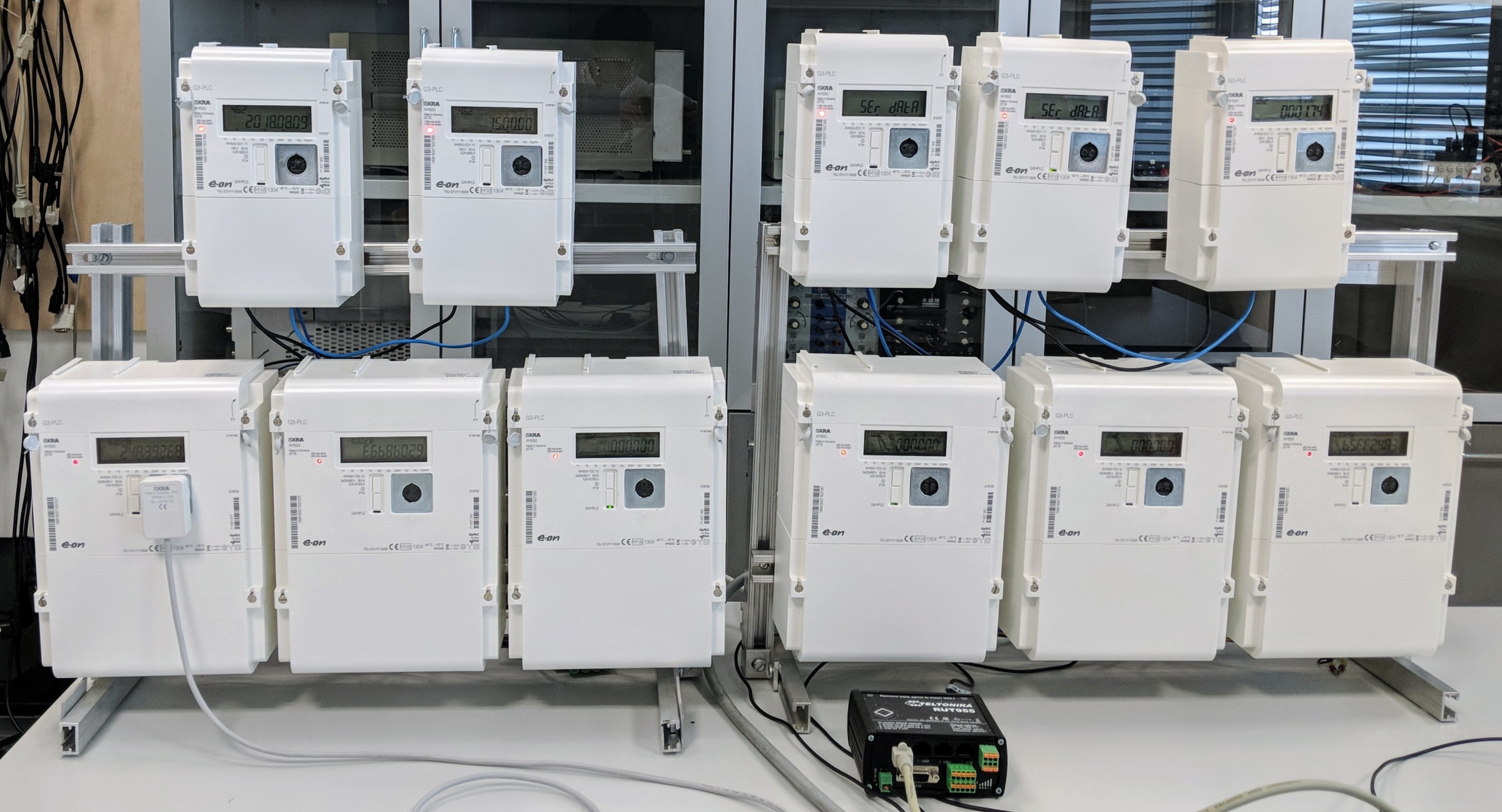
Group website: https://www.utko.fekt.vut.cz/en/energy-and-smart-grids
The research groups focuses on communication and transmission technologies for energy. It designs communication solutions, develops communication modules and units, performs reliability/vulnerability analyzes and implements stress and functional tests. It also researches and develops solutions for analysis, prediction and evaluation of transmitted data and other parameters in advanced analytics, sensors and measurements. Last but not least, it influences a number of trends by participation in the latest technological concepts and cooperation with leading transmission and distribution system operators, by contributions to regulatory frameworks and the national action plan itself - NAP SG.
Main research activities
- Intelligent measurement (communication infrastructure design, testing and integration of transmission technologies - wired and wireless, demand response systems, smart home concept, customer involvement and regulatory framework, data processing and prediction)
- Smart networks, infrastructure and island operations (methodologies for testing new transmission and communication technologies, issues of smart substations and distribution transformer stations, data transmission technologies over power lines - PLC, integration and issues of urban operations, black-out issues, reliability and availability of control and monitoring SCADA systems)
- E-Mobility (communication solutions to increase reliability, interoperability issues, secure infrastructure, verification of the suitability of transmission technologies and their integration)
- Intelligent buildings (analysis and implementation of communication technologies and protocols for building automation, design, verification, and integration of aggregation mechanisms for data collection within autonomous buildings, surveillance and visualization platform for property control)
- Prototyping, simulation, modeling and testing (experimental development and construction of terminal communication and transmission elements for reliable and secure infrastructures, verification of the design of communication equipments, pre-certification testing)
Main research results
- ROASCIO, G.; COSTA, G.; BACCELLI, E.; MALINA, L.; MATULEVICIUS, R.; MOMEU, M.; MORKEVICIUS, N.; RUSSO, E.; STOJANOVIC´, B.; TASIDOU, A. HArMoNICS: High-Assurance Microgrid Network Infrastructure Case Study. IEEE Access, 2022, vol. 10, no. 1, p. 115372-115383. ISSN: 2169-3536. (https://ieeexplore.ieee.org/document/9933432)
- VOHNOUT, R.; BUKOVSKÝ, I.; CHOU, S.; GEYER, J.; BUDÍK, O.; SHARMA, R.; PROKÝSEK, M.; HORVÁTH, T.; WYCKMANS, A. Living Lab Long-Term Sustainability in Hybrid Access Positive Energy Districts -A Prosumager Smart Fog Computing Perspective. IEEE Internet of Things Journal, 2023, vol. 10, no. 21, p. 18898-18908. ISSN: 2327-4662. (https://ieeexplore.ieee.org/document/10137645)
- VRTAL, M.; FUJDIAK, R.; BENEDIKT, J.; PRAKS, P.; BRIŠ, R.; PTÁČEK, M.; TOMAN, P. Time-Dependent Unavailability Exploration of Interconnected Urban Power Grid and Communications Network. Algorithms, 2023, vol. 16, no. 12, p. 1-21. ISSN: 1999-4893. (https://www.mdpi.com/1999-4893/16/12/561)
- MOŽNÝ, R.; MAŠEK, P.; MOLTCHANOV, D.; ŠTŮSEK, M.; MLÝNEK, P.; KOUCHERYAVY, Y.; HOŠEK, J. Characterizing Optimal LPWAN Access Delay in Massive Multi-RAT Smart Grid Deployments. Internet of Things, 2024, vol. 1, no. 1, p. 1-43. ISSN: 2542-6605. (https://www.sciencedirect.com/science/article/pii/S2542660523003244)
- HOLASOVÁ, E.; BLAŽEK, P.; FUJDIAK, R.; MAŠEK, J.; MIŠUREC, J. Exploring the Power of Convolutional Neural Networks for Encrypted Industrial Protocols Recognition. Sustainable Energy, Grids and Networks, 2024, vol. 38, no. June 2024, p. 1-11. ISSN: 2352-4677. (https://www.sciencedirect.com/science/article/pii/S2352467723002771)
- MLÝNEK, P.; MIŠUREC, J.; KRAJSA, O.; FUJDIAK, R.; SLÁČIK, J.; HANÁK, P.; MUSIL, P.; POSPÍCHAL, L.: KJ_funk; Communiaction Unit SMARTBOX (https://www.vut.cz/vut/aktuality-f19528/cenu-zlaty-amper-ziskal-smartbox-z-vut-na-jeho-vyvoji-spolupracuje-spolecnost-eg-d-ktera-jej-testuje-ve-sve-distribucni-siti-d255561)
- MLÝNEK, P.; JURÁŇ, R.: UWBAngleAnchor; UWB anchor for angkle measurement. (in cooperation with https://sewio.net
Industrial automation and instructional testbed group
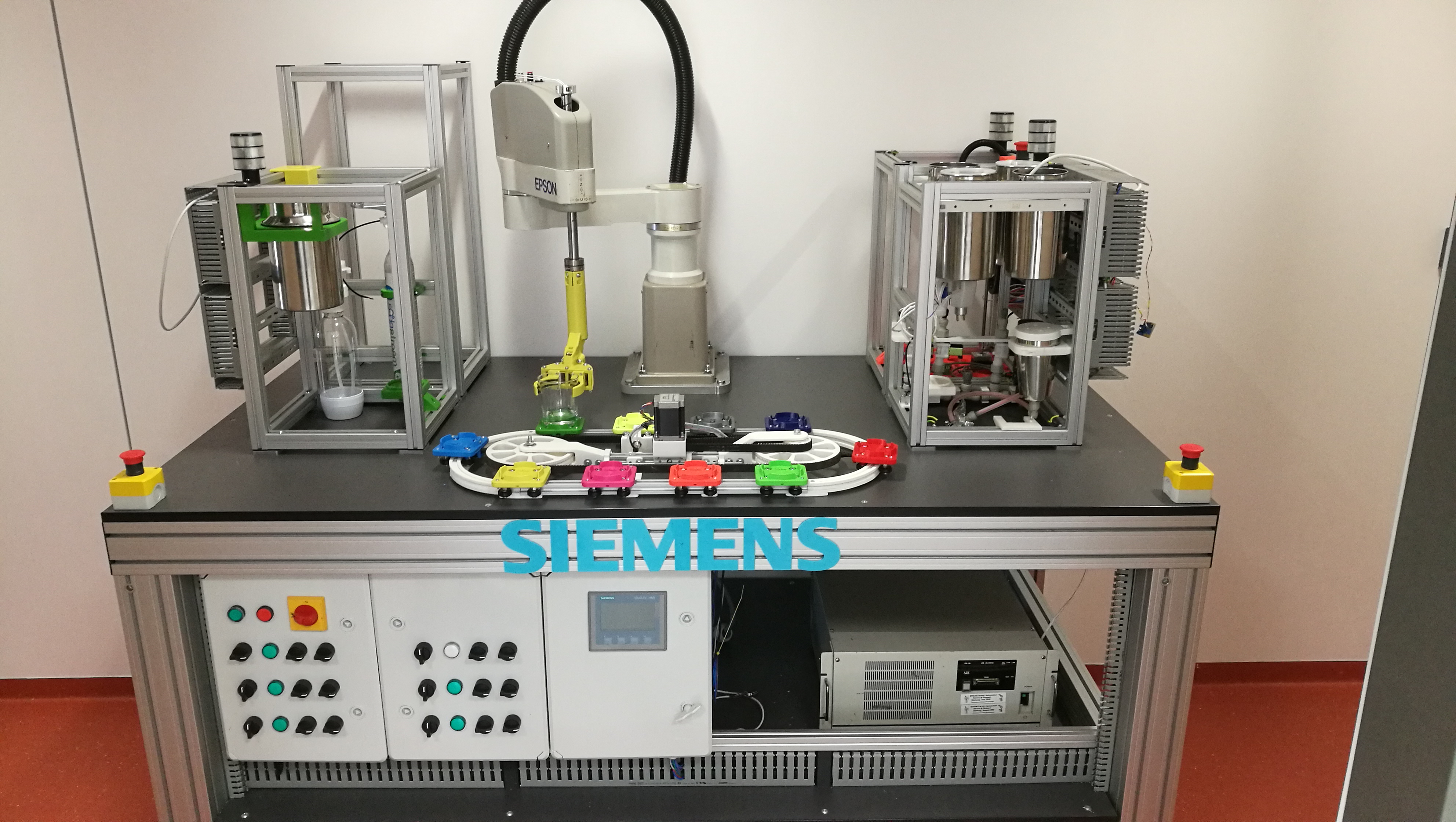
Leader: Miroslav Jirgl, Ph.D.
The group conducts complex research and development within industrial control, HMI/SCADA and PLC systems, embedded systems, and communication, examining the individual sectors in view of real-time data collection, management, transfer, and storage. Our research activities also encompass a wide spectrum of approaches and technologies closely related to the modern concept of Industry 4.0.
Main research activities
- Cyber-physical systems including HiL-CPS (Human in-the-loop Cyber-Physical Systems).
- Data analysis using artificial intelligence.
- Digital models and digital commissioning.
- PLM (Product Life-Cycle Management) systems.
- Standardization or unification processes using AAS (Asset Administration Shell).
- Reliability and safety of the industrial/manufacturing processes.
Main research results
- A system to allow remote monitoring of respiratory masks, completed in collaboration with the Speltronic company.
- Virtual laboratories and a physical testbed to teach Industry 4.0 approaches and technologies, designed with support from Siemens.
- Car driving simulator platform for measurement and evaluation of driver performance.
Internet of Things, Industry 4.0 and sensors
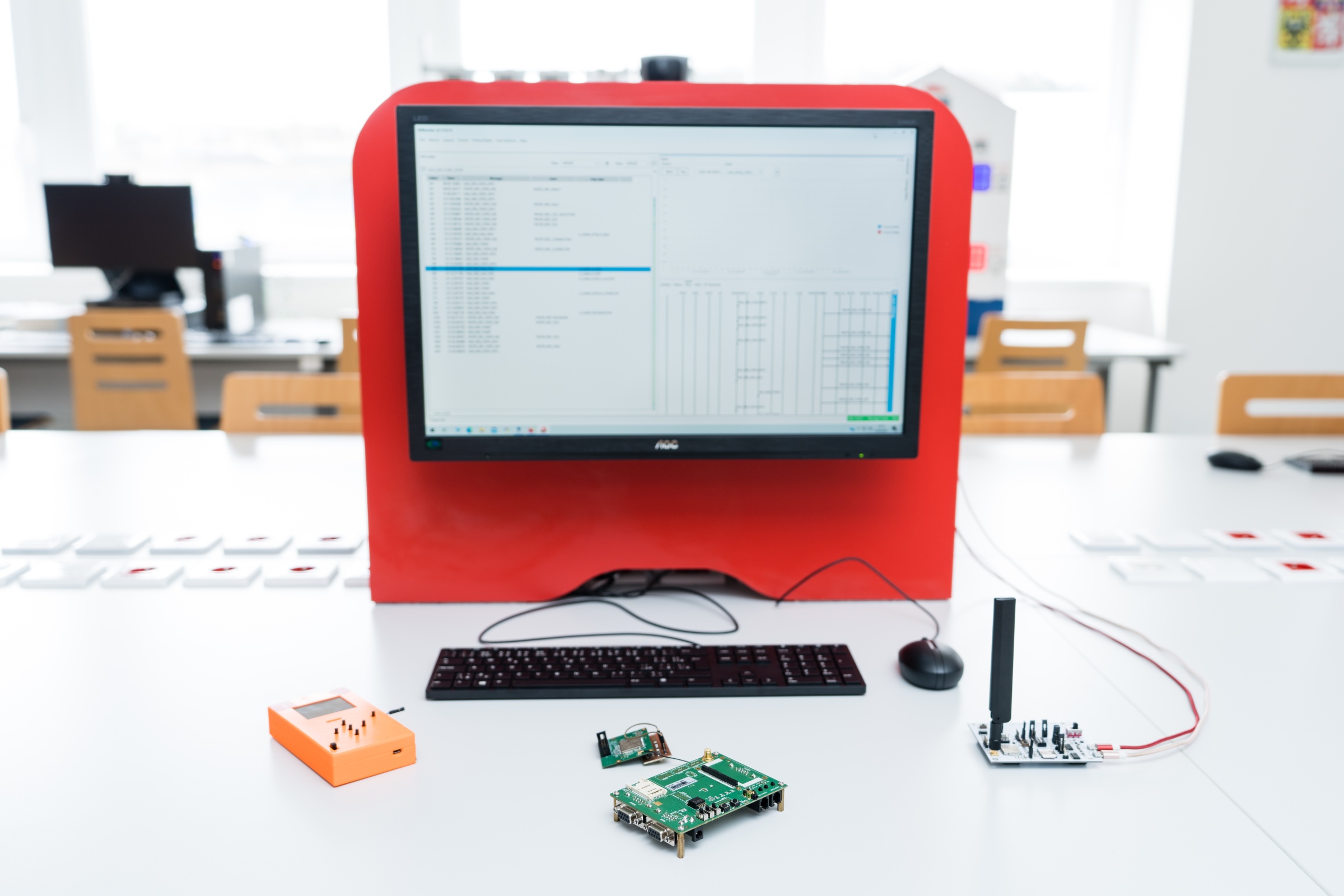
Group website: https://www.utko.fekt.vut.cz/en/energy-and-smart-grids
We deal with communication technologies and protocols for data transmission within the emerging communication scenarios for end users (Internet of Things) and industrial enterprises (Industry 4.0). The key point of research activities is the ability to design, construct and verify the functionality of the proposed devices and the subsequent software implementation of selected functionalities. Attention is focused on the development of terminal devices (sensors for measuring physical quantities) and communication units (aggregation gateways), which are deployed within intelligent networks (Smart Grids).
Main research activities
- Industrial communication systems (verification of communication parameters of LPWA technologies for M2M data transmission within Industry 4.0)
- Industrial networks and control systems (new automation solutions, digitization, localization and inventory, industrial communication protocols, transmission technologies with minimal response and high reliability, advanced virtualization and cyber-physical systems, IT/OT convergence, control systems, programmable logic controllers - PLC , implementation of technological solutions within the concepts of Industry 4.0 and smart factories)
- Use of electronic wearability in industrial applications (research of new communication technologies and protocols for wearable devices)
- Smart home (design of aggregation mechanisms for data processing within a smart home or automated buildings, development of prediction algorithms for automatic adjustment of household parameters based on user habits)
- Optical fiber sensors (measurement of temperature, pressure and vibration by single point and distributed sensor systems, design and implementation of sensor systems - phase sensitive OTDR, Raman OTDR, interferometers, FBG grating sensors, evaluation measurements)
Main research results
- ŠTŮSEK, M.; MOLTCHANOV, D.; MAŠEK, P.; MIKHAYLOV, K.; ZEMAN, O.; ROUBÍČEK, M.; KOUCHERYAVY, Y.; HOŠEK, J. Accuracy Assessment and Cross-Validation of LPWAN Propagation Models in Urban Scenarios. IEEE Access, 2020, vol. 8, no. 1, p. 154625-154636. ISSN: 2169-3536. (https://dspace.vut.cz/items/b6624612-0dd6-4a5a-957f-9543aadad0dd)
- SAAFI, S.; FODOR, G.; HOŠEK, J.; ANDREEV, S. Cellular Connectivity and Wearable Technology Enablers for Industrial Mid-End Applications. IEEE COMMUNICATIONS MAGAZINE, 2021, vol. 59, no. 7, p. 1-7. ISSN: 0163-6804. (https://ieeexplore.ieee.org/document/9502661)
- ŠTŮSEK, M.; MOLTCHANOV, D.; MAŠEK, P.; MIKHAYLOV, K.; HOŠEK, J.; ANDREEV, S.; KUCHERYAVY, E.; KUSTAREV, P.; ZEMAN, O.; ROUBÍČEK, M. LPWAN Coverage Assessment Planning without Explicit Knowledge of Base Station Locations. IEEE Internet of Things Journal, 2022, vol. 9, no. 6, p. 4031-4050. ISSN: 2327-4662. (https://ieeexplore.ieee.org/document/9507528)
- ŠTŮSEK, M.; MAŠEK, P.; MOLTCHANOV, D.; STEPANOV, N.; HOŠEK, J.; KOUCHERYAVY, Y. Performance Assessment of Reinforcement Learning Policies for Battery Lifetime Extension in Mobile Multi-RAT LPWAN Scenarios. IEEE Internet of Things Journal, 2022, vol. 9, no. 24, p. 25581-25595. ISSN: 2327-4662. (https://ieeexplore.ieee.org/document/9854077)
- MYŠKA, V.; LEVEK, V.; BURGET, R.; KOLAŘÍK, M.; ŠTEFFAN, P.; HÁZE, J. IoT mechatronic access control system ePRO 1.4. IEEE Consumer Electronics Magazine, 2023, p. 1-8. ISSN: 2162-2248. (https://ieeexplore.ieee.org/document/10313021)
- MLÝNEK, P.; JURÁŇ, R.; MRÁZ, Ľ.; Sewio Networks s.r.o., Brno, Medlánky: Moving Object Position Tracking Assembly. 37207, (2023) (part of Sewio loclization system - https://www.sewio.net/)
- MLÝNEK, P.; MAŠEK, P.; MIŠÁK, S.: SmartModule_CAT; Modular IoT communication module. VUT FEKT UTKO Technická 12, 61600 Brno (Part of #VodafoneUniLab - https://www.vodafone.cz/podnikatele/internet-veci/unilab/)
Laboratory of application specific systems
Leader: Vladimír Holcman, Ph.D.
The group develops unique instruments and systems which, based on novel sensors and algorithms, facilitate shifting the limits of regular commercial products towards the satisfaction of more narrowly specified customer requirements.
Major 4-year outputs:
- A communication system for forklift trucks and a central warehouse safety system.
- Metal component localizer (up to 1.5 mm) for conveyor belts.
- A setup to detect and predict defective coils in automotive applications.
- A system to control the hardening of carbon parts and to localize defects in such products.
Laboratory of Environmental Analysis
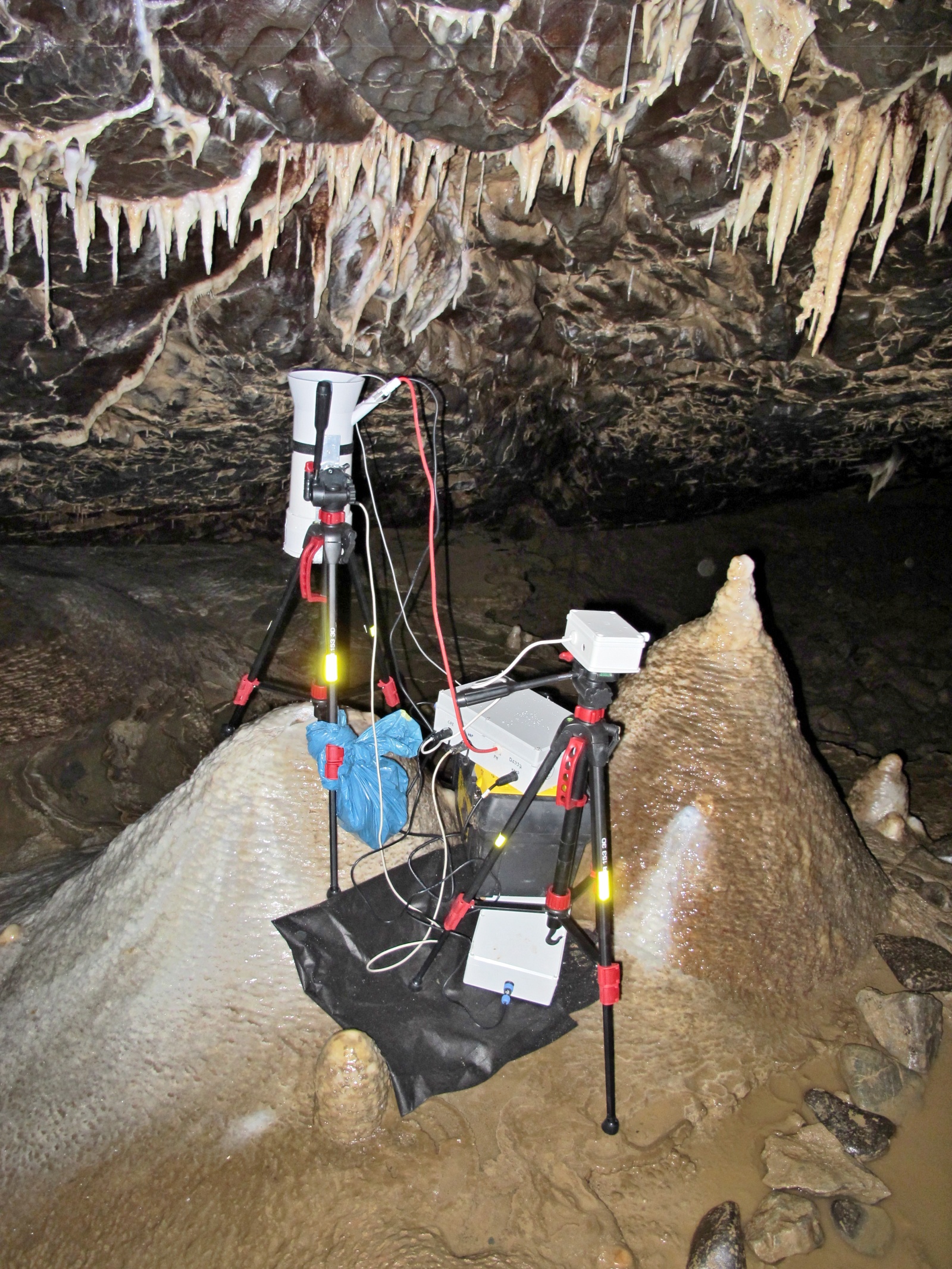
Leader: Ing. Zdeněk Roubal, Ph.D.
The research group of the laboratory has been involved in monitoring environmental variables for a long period. Especially in caves, to monitor parameters important for speleotherapy. In addition to this main focus, questions of human influence on the cave environment and the examination of phenomena between the earth’s surface and the underground spaces are also studied. This is also very topical in terms of groundwater quality. Researchers of the group can design and built a necessary unique custom instrumentation for above mentioned purposes.
Main research activities:
- Development of a methodology for the measurement of light air ions
- Correlation between aerosols and light air ions
- Monitoring cave parameters that affect the success of speleotherapy
- SZABÓ, Z.; ROUBAL, Z.; KADLEC, R.; PRACNÝ, P.; LANG, M.: Cave drip meter with data logger. Amateur cave. (functional sample)
- ROUBAL, Z.; SZABÓ, Z.; KADLEC, R.: Soil surface CO2 meter Amateur cave. (functional sample)
- TJ04000064, Evaluation of the influence of surface conditions on the cave environment, https://starfos.tacr.cz/en/projekty/TJ04000064
Main research results – publications
- FAIMON, J.; BALDÍK, V.; ŠTELCL, J.; VŠIANSKÝ D.; REZ J.; PRACNÝ, P.; NOVOTNÝ, R.; LANG, M.; ROUBAL, Z.; SZABÓ Z.; HADACZ, R. Corrosion of calcite speleothems in epigenic caves of Moravian Karst (Czech Republic). Environ Earth Sci, 2024, vol. 83, no. 184. https://doi.org/10.1007/s12665-024-11449-w
- ROUBAL, Z.; BARTUŠEK, K.; SZABÓ, Z.; DREXLER, P.; ÜBERHUBEROVÁ, J. Measuring Light Air Ions in a Speleotherapeutic Cave. Measurement Science Review, 2017, vol. 17, no. 1, p. 27-36. ISSN: 1335-8871. https://doi.org/10.1515/msr-2017-0004
- ROUBAL, Z.; GESCHEIDTOVÁ, E.; BARTUŠEK, K.; SZABÓ, Z.; STEINBAUER, M.; ÜBERHUBEROVÁ, J.; LAJČÍKOVÁ, A. Evaluating the Parameters of a Systematic Long-Term Measurement of the Concentration and Mobility of Air Ions in the Environment inside Cisarska Cave. Atmosphere, 2021, vol. 12, no. 12, pp. 1-31. ISSN: 2073-4433. https://doi.org/10.3390/atmos12121615
Machine Vision Group
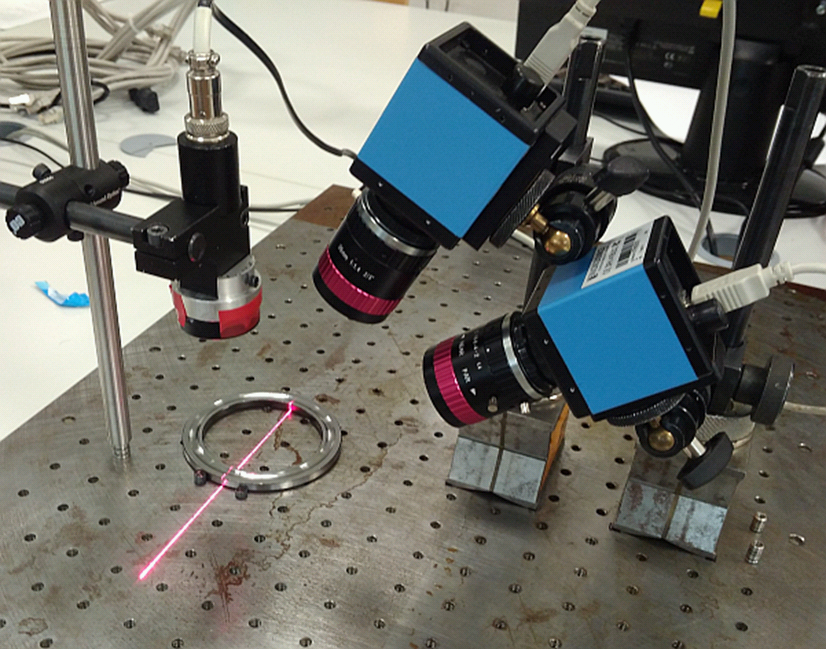
Leader: Karel Horák, Ph.D.
The group focus is on research of machine perception and computer vision techniques using image and signal processing, pattern recognition, object detection and recognition. Methods implementations are based on both traditional analytical signal processing and machine learning architectures.
Main research activities
- Machine vision techniques in industrial inspection and diagnostics.
- Visual monitoring for traffic systems and ADAS systems.
- Camera systems and image recognition in biology, medicine, biology and market.
Main research results
- Visual industrial system for general-purpose multiview anomaly detection.
- Traffic monitoring architecture for real-time pedestrians and cyclists detection.
- Publications in top-cited journals (Q1 and Q2) in an area of machine vision and object recognition.
Measurement group
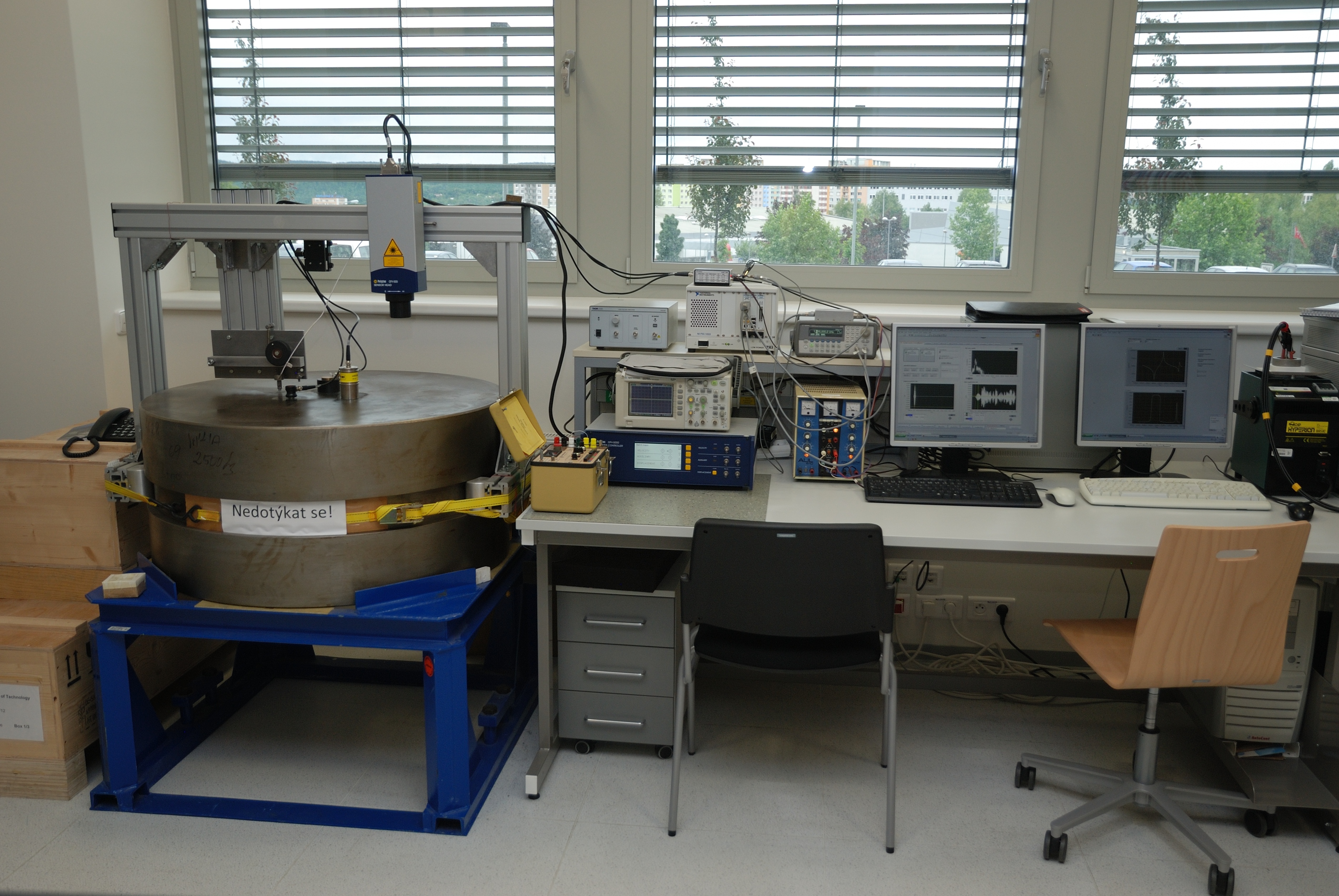
Leader: Assoc. Prof. Petr Beneš
The group’s researchers explore the design and development of measuring systems; electrical and electronic measurement; sensors of non-electrical quantities; and methods for the measurement and evaluation of physical quantities, comprising or relating to, above all, techniques and effects such as vibro- and thermodiagnostics, acoustic emission, flow, and noise. The group is involved in the running of Accredited laboratory No. 1657 (vibration and climatic testing of electrical, electronic, and mechanical products within academic and commercial activities, including broad contract-based research conducted especially for automotive customers) and Accredited calibration laboratory No. 2395 (calibration of vibration sensors, generators, and vibrometers).
Main research activities
- Design and development of sensors and measuring systems.
- Custom technical measurements, system integration.
- Analog and digital methods of signal processing.
- Measurement of technological quantities - dimensions, temperature, pressure, flow, speed, humidity, etc.
- Technical diagnostics, vibrodiagnostics, acoustic emission.
- Expert opinions, consultations, training.
Main research results
- The design and development of an automated system for the measurement of parameters in Reggiana Riduttori precise gearboxes, jointly with the company Moog Brno s.r.o.
- The design and development of a system to measure the geometric parameters of springs for the company HŽP a.s.
- Datalogger for smart vibration sensor, functional sample.
Nanogroup: LabSensNano
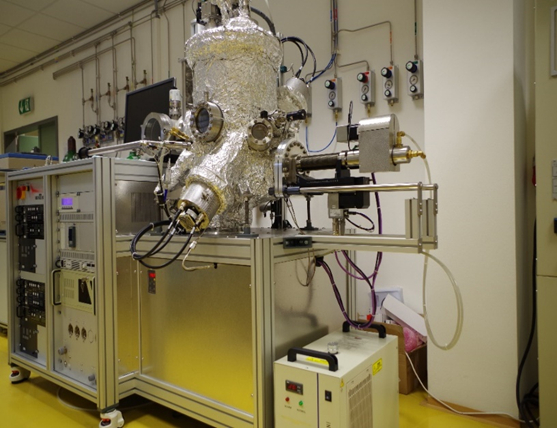
Leader: Assoc. Prof. Jaromír Hubálek
Group website: http://www.umel.feec.vutbr.cz/labsensnano/
The laboratory experts examine the applicability of nanotechnologies in both general sensorics and the development of sensors of various quantities. The corresponding work involves the designing of not only microsensors to detect gases via nanoparticles but also nanostructured and functionalized electrodes to be employed in electrochemical sensors and biosensors. Other investigated subjects prominently include advanced techniques for the diagnostics and subsequent analysis of substances that find use in medicine.
Major 4-year outputs:
- A technique to allow the processing of a signal from a bolometer (bolometer array) and an electronic system to perform the task: the relevant patent has been put into practice abroad.
- A miniature bolometer membrane with increased absorption and a procedure to form a bolometer absorption layer: the relevant patent has been put into practice abroad.
- A 100-pixel MEMS with bolometers.
Non-destructive Diagnostics Laboratory (NDTLab)
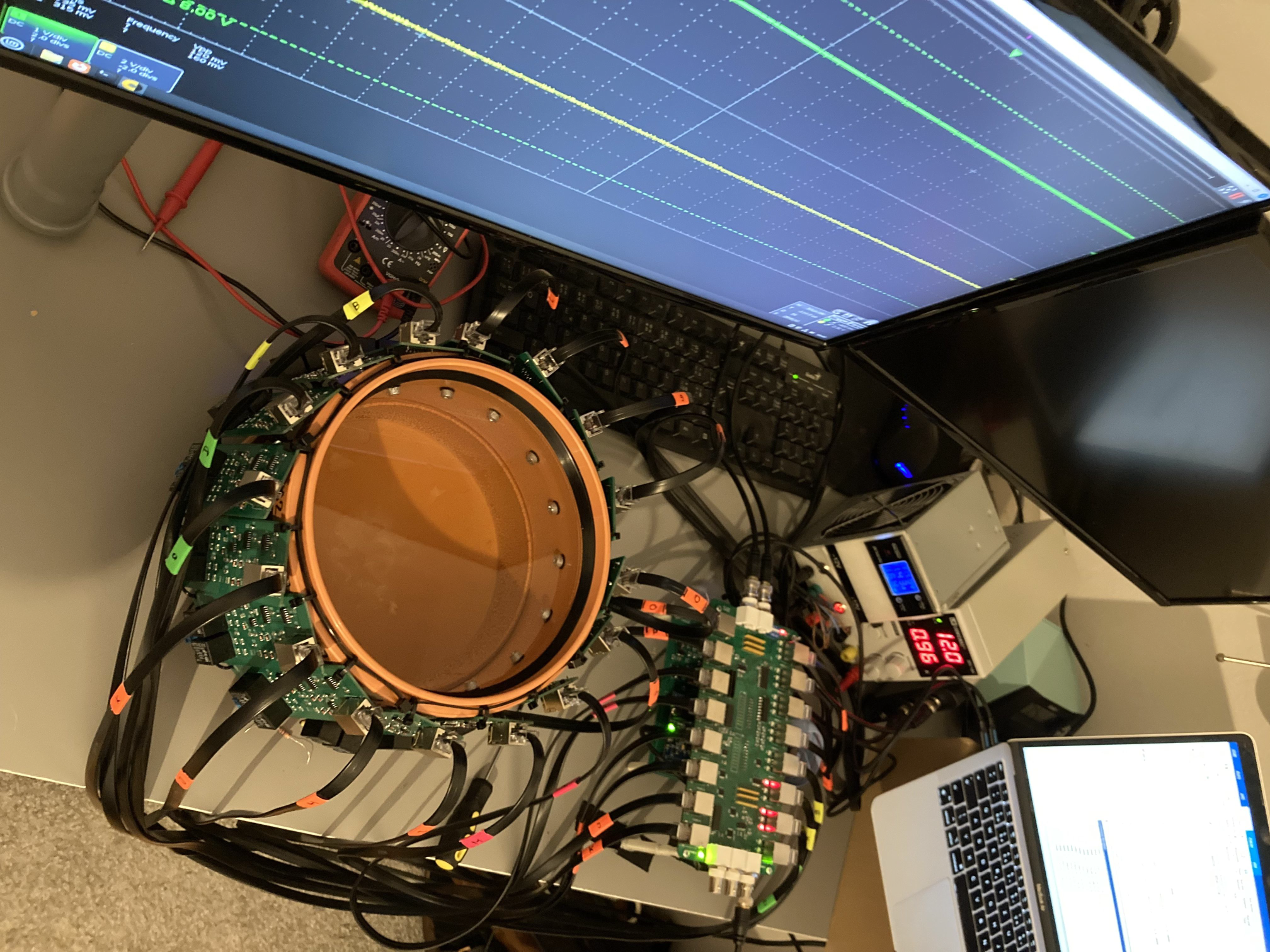
Leader: doc. Ing. Jan Mikulka, Ph.D.
The non-destructive diagnostics research group has long specialized in advanced methods such as nuclear magnetic resonance (NMR), quadrupole resonance (NQR) and electrical impedance tomography (EIT), etc. The group's activities include not only the design of sophisticated electronic circuits required for these techniques, but also the optimization of measurement methods that increase the accuracy and efficiency of diagnostic processes. The group is also intensively dedicated to solving inverse image reconstruction tasks, which includes the development of algorithms and models for accurate imaging of internal structures from measured data. It also deals with advanced processing of signals (images, spectra), where it uses modern methods for the analysis and interpretation of the obtained information, which leads to the improvement of the diagnostic and imaging capabilities of these technologies.
Main research activities:
- Design and optimization of NMR tomography scanning coils
- Research in the field of design and optimization of NMR tomography imaging sequences including advanced image analysis
- Design and implementation of a circuit solution of nuclear quadrupole resonance for the detection of dangerous materials in solid state
- Design and implementation of a circuit solution for electrical impedance tomography for a wide range of applications
- Research in the field of non-destructive diagnostics from laboratory applications to structural units of buildings
- Parallel processing of a large amount of captured data
The most significant bibliographic results in the last 5 years:
- SOLÁR, P.; VALEKOVÁ, H.; MARCOŇ, P.; MIKULKA, J.; BARÁK, M.; HENDRYCH, M.; STRÁNSKÝ, M.; SIRŮČKOVÁ, K.; KOSTIAL, M.; HOLÍKOVÁ, K.; BRYCHTA, J.; JANČÁLEK, R. Classification of brain lesions using a machine learning approach with cross-sectional ADC value dynamics. Scientific Reports, 2023, vol. 13, no. 1, ISSN: 2045-2322. https://doi.org/10.1038/s41598-023-38542-7
- NEČAS, D.; KLAPETEK, P. Synthetic Data in Quantitative Scanning Probe Microscopy. Nanomaterials, 2021, vol. 11, no. 7, p. 1-26. ISSN: 2079-4991. https://doi.org/10.3390/nano11071746
- DUŠEK, J.; MIKULKA, J. Measurement-Based Domain Parameter Optimization in Electrical Impedance Tomography Imaging. SENSORS, 2021, vol. 21, no. 7, p. 1-20. ISSN: 1424-8220. https://doi.org/10.3390/s21072507
- KŘEPELKA, P.; PÉREZ-RODRÍGUEZ, F.; BOLÍVAR, A. Two-dimensional mid and near infrared correlation spectroscopy for bacterial identification. JOURNAL OF NEAR INFRARED SPECTROSCOPY, 2020, vol. 1, no. 1, p. 1-10. ISSN: 1751-6552. https://doi.org/10.1364/JNIRS.29.000063
- FIALA, P.; BARTUŠEK, K.; DĚDKOVÁ, J.; KADLEC, R.; DOHNAL, P. Experimental Measurement of Nanolayers via Electromagnetic, Near Infrared, and Gamma Radiation. Measurement Science Review, 2019, vol. 19, no. 4, p. 144-152. ISSN: 1335-8871. https://doi.org/10.2478/msr-2019-0020
- MOTÚZ, R.; LEYSEN, W.; MOREAU, P.; GUSAROV, A.; DREXLER, P.; WUILPART, M. Theoretical assessment of the OTDR detector noise on plasma current measurement in tokamaks. Applied Optics, 2019, vol. 58, no. 11, p. 2795-2802. ISSN: 2155-3165. https://doi.org/10.1364/AO.58.002795
The most significant results of applied research in the last 5 years:
- CHALUPA, D.; MIKULKA, J.: Supervised segmentation toolbox using machine learning for 3D Slicer. Git repository. URL: https://github.com/chalupaDaniel/slicerSupervisedSegmentation. (software)
- BALAJKA, M.; MIKULKA, J.; DUŠEK, J.: PLC EIT 0.1; Switching card for electrical impedance tomography measurements. (functional sample) Documentation can be downloaded here.
The most significant solution projects in the last 5 years:
- Improved Multi-resonance Probe for Advanced Techniques in Magnetic Resonances (CEITEC VUT/FEKT-J-24-8644), from 03/2024, https://www.vut.cz/en/rad/projects/detail/36239
- NV18-08-00459, Spatial Analysis of the Force Load on a Deformed Developing Spine, and Corrective Force Modelling Applied to Minimize the Scope of a Scoliosis Surgery, from 1. 5. 2018, to 31. 12. 2021, https://starfos.tacr.cz/en/projekty/NV18-08-00459
- Detection of environmental anomalies by electrical impedance tomography, from 1. 3. 2018, to 28. 2. 2019, https://www.vut.cz/en/rad/projects/detail/29625
Robotics and artificial intelligence group
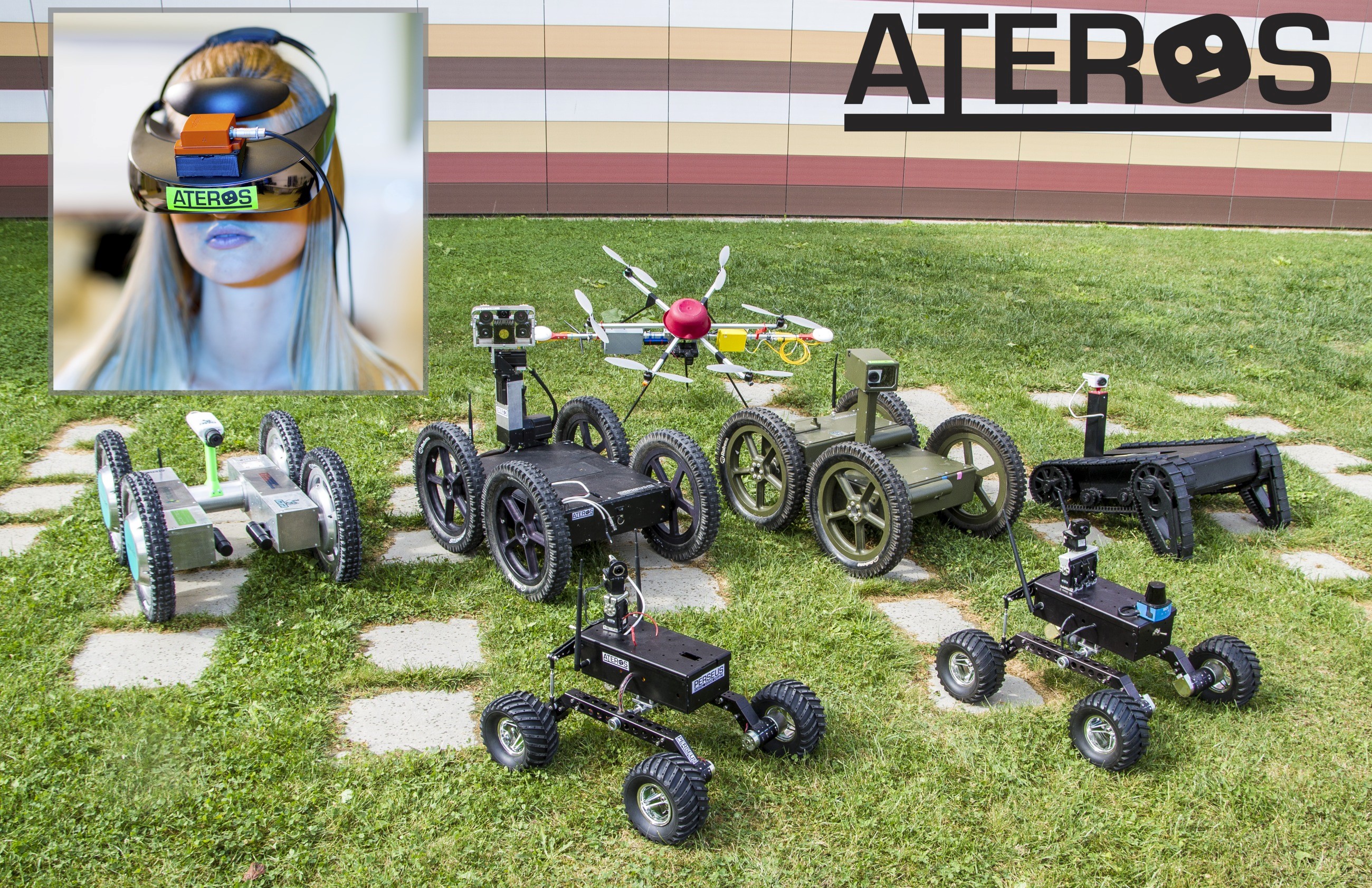
Leader: Prof. Luděk Žalud
The research is primarily within mobile reconnaissance robotics and involves practical tasks directly linked to the following fields and assignments: telepresence-based remote missions; precise self-localization and navigation in an indoor or outdoor environment; cooperation between mobile robots forming a heterogeneous set; autonomous ionizing radiation measurement; highly robust mobile robot design; and communication between grouped robots. Another area of interest for the robotics and AI experts lies in industrial manipulators and such related subdomains of Industry 4.0 as safe communication, personal detection, and intra-factory logistics.
Main research activities
- Mobile robotics - development of mobile robots for various environments (wheeled and propeller driven).
- User interfaces for remotely controlled surveying mobile robots.
- Telepresence control of remotely controlled machines. Stereoscopic display.
- Augmented reality - combination of CCD image with thermal imaging, 3D color display - combination of CCD and 3D proximity scanner.
- Biomedical robotics - robotic diagnostic methods, feedback rehabilitation.
- Data Mining and Prediction in Sequential Data.
- Artificial intelligence - expert systems, artificial neural networks.
Main research results
- The ATEROS (Autonomous telepresence robotic system), a heterogeneous formation of mobile robots operating in a combined, autonomy-and-telepresence mode. The system has been developed as a complete unit embodying the design, development, and fabrication of each individual robot; a communication system; autonomous algorithms; sensor subsystems; and programs.
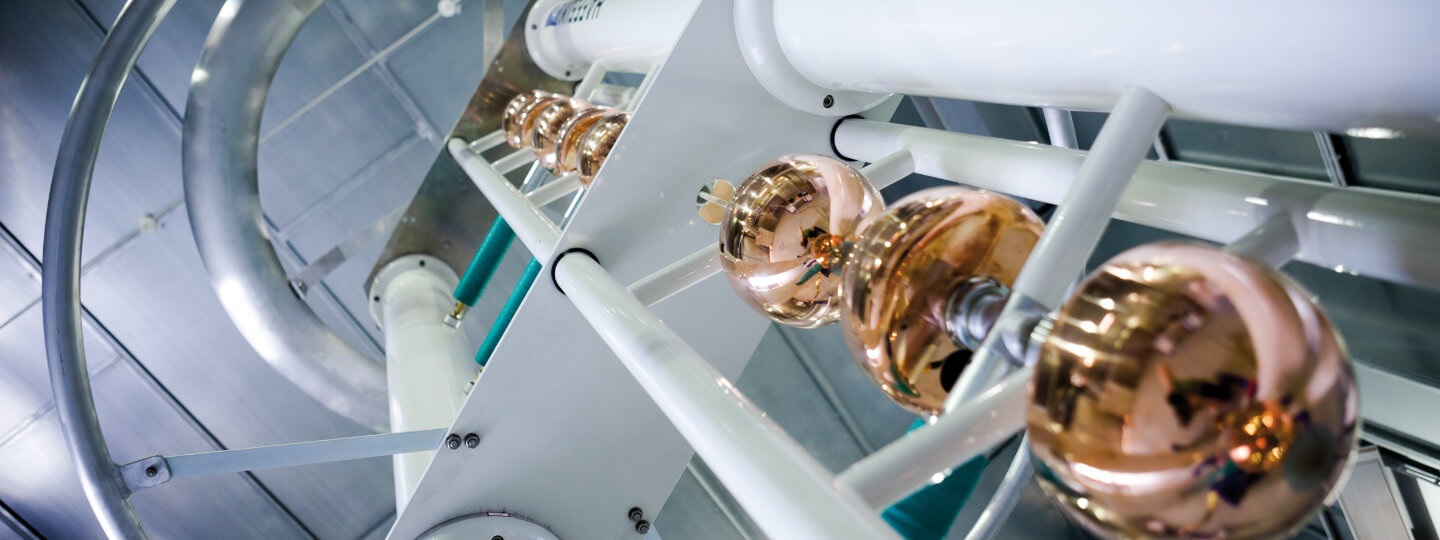
Cooperation with industry partners
Do you solve a problem and need a help or partner?
Ask our experts. We can help you!
More about cooperation